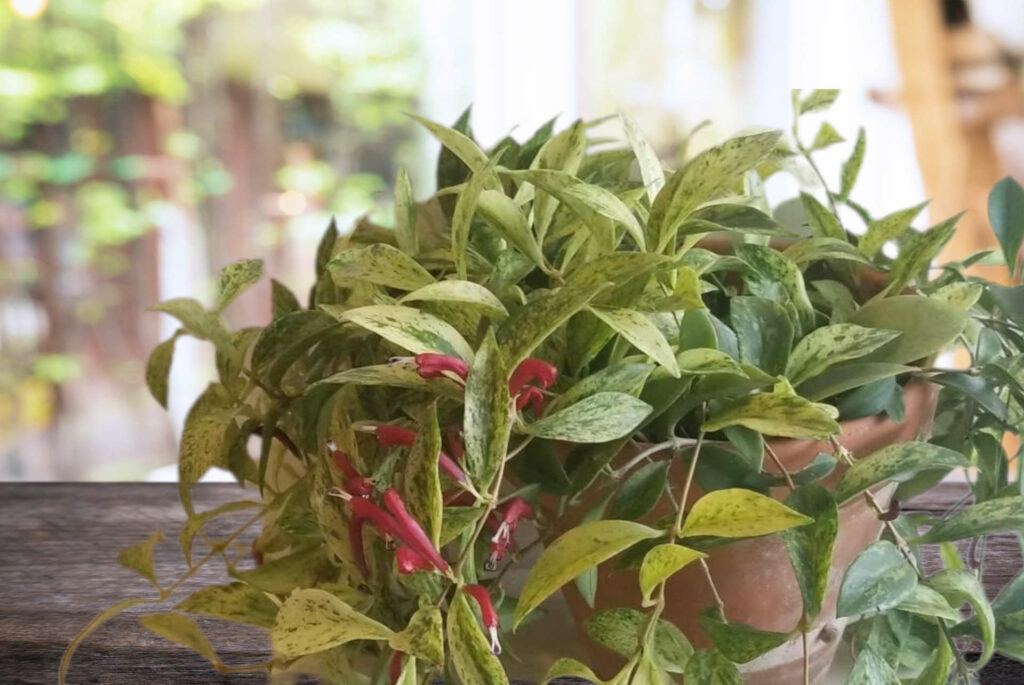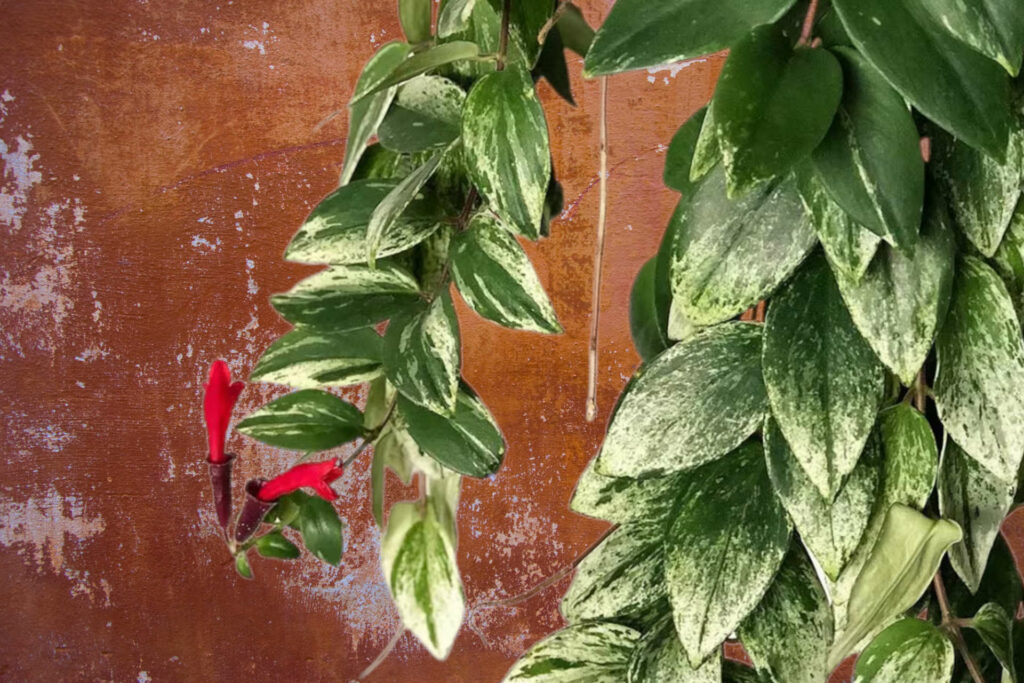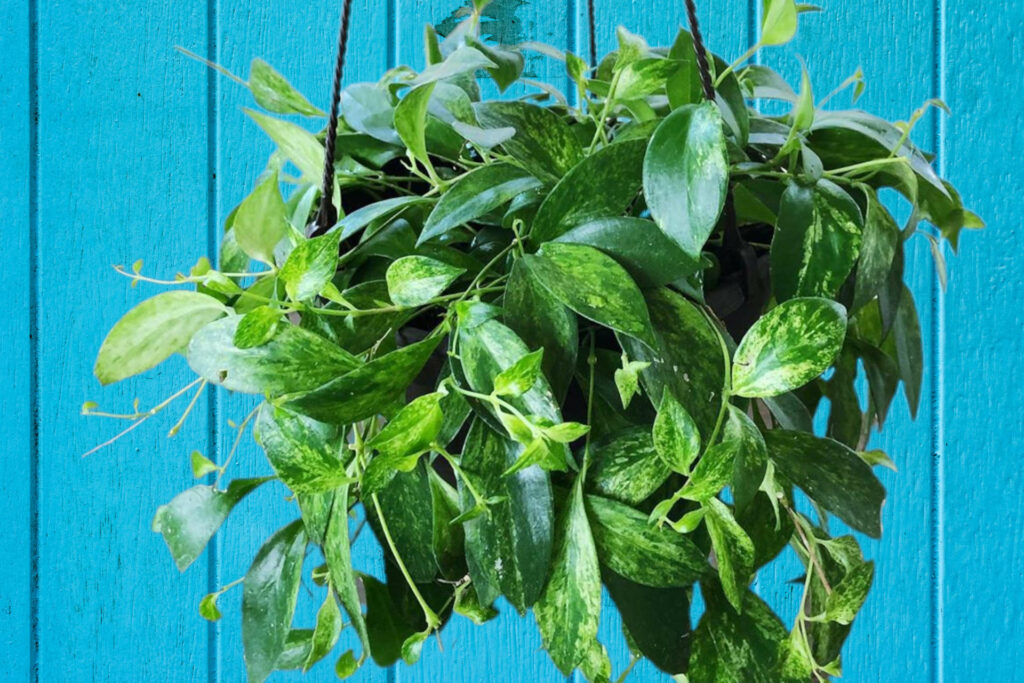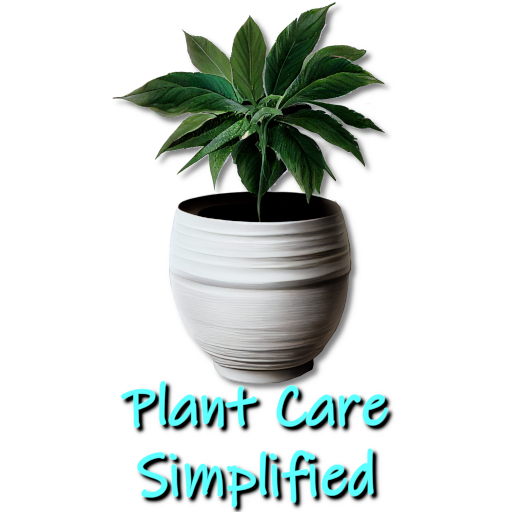Variegated Lipstick Plant (variegata): An Exotic Addition to Your Indoor Garden
Kim is passionate about helping people create beautiful, healthy indoor spaces that are filled with plants. Kim believes that plants make us happier, healthier human...
Within the realm of houseplants, the Aeschynanthus radicans 'Variegata,' more commonly known as the variegated lipstick plant or Lipstick plant variegata, has been steadily garnering attention. This remarkable flora, celebrated for its striking foliage and vibrant tube-shaped blooms, offers an exceptional addition to any indoor garden.
As a favored choice among exotic plant enthusiasts, the variegated lipstick plant presents not only visual allure but also a fascinating growth habit. Below, we delve into the various aspects of the plant, from its origins and unique characteristics to its cultivation and care. Moreover, we will look to provide gardeners and plant lovers with valuable insights and guidance on integrating this enchanting species into their personal green space both as an indoor houseplant and outside, if the climate permits.
Geographical Origins and Habitat

Aeschynanthus radicans 'Variegata,' or variegated lipstick plant, originates from the tropical rainforests of Southeast Asia. This captivating houseplant thrives in its native environments of Malaysia, Indonesia, and Southern China, where it clings to tree branches or rocky outcrops under the canopy's dappled shade.
Distinctive Features: Trailing Growth, Variegated Leaves & Tube-Shaped Flowers
The variegated lipstick plant boasts several eye-catching features that set it apart from other exotic indoor flora. Its trailing growth habit lends itself well to draping over surfaces or climbing up supports with aerial roots aiding in attachment.
The foliage is an engaging blend of green hues intermingled with creamy white streaks or patches—a feature that distinguishes this variety from its solid green counterparts. There are around 150 varieties of Lipstick plants, with some, such as the black pagoda being naturally variegated, while others, like the curly lipstick plant, can be found in the variegated form.
Perhaps most alluring are its vibrant flowers, which emerge from deep-red calyxes that resemble a tube of lipstick being twisted open—hence the common name "lipstick plant." These blossoms often appear in clusters along vine-like stems during late summer through early winter months and exhibit shades ranging from crimson red to vivid orange-red hues. Not only do these unique blooms add a pop of color, but they also draw admiration for their unusual shape and presentation.
The Art of Variegation: Colors and Patterns in the Variegated Lipstick Plant
The Science Behind Variegation
Variegation occurs due to genetic mutations, resulting in a lack of chlorophyll production within certain cells on the plant's leaves, leading to an array of colors aside from solid green shades. This captivating trait enhances the visual allure of plants like Aeschynanthus radicans 'Variegata,' contributing to their increasing popularity among houseplant enthusiasts.
An Array of Colors in the Foliage
The captivating foliage of Aeschynanthus radicans 'Variegata' boasts a melange of hues that include vibrant greens, creamy whites, and soft yellows intermingled with occasional pinkish tones along leaf edges or veins - a striking contrast against its tube-shaped red flowers.
Unique Leaf Patterns and Their Formation
Each variegated lipstick plant showcases distinct leaf patterns that develop during cellular growth as chlorophyll production varies between cells or different layers within a single cell wall, creating an intricate mosaic effect on each individual leaf surface.
Differing levels of sunlight exposure can also influence variegated pattern formations by affecting chlorophyll synthesis rates; therefore, strategic placement within well-lit areas can help accentuate these mesmerizing designs.
Each elliptical leaf spans approximately 3 inches long, displaying irregularly distributed patches that contribute to the overall visual appeal of this exotic houseplant.
Enhancing and Preserving Vibrant Variegation

To ensure your variegate lipstick plant maintains its stunning foliage patterns:
- Position your plant near bright indirect light sources for optimal color vibrancy.
- Employ proper watering techniques (neither over nor under-watering), as inconsistent moisture can lead to duller colors.
- Supply appropriate nutrients through regular fertilization, ensuring the plant receives all essential elements for maintaining colorful leaves.
By understanding and catering to these aspects of variegation, you'll be able to cherish the visual feast provided by your stunning variegated lipstick plant, enriching both your indoor garden and overall gardening experience.
Growth and Development of the Variegated Lipstick Plant
Overall growth pattern (climbing/trailing)
The Aeschynanthus radicans 'Variegata' exhibits a captivating climbing and trailing growth pattern, making it an ideal candidate for hanging baskets or cascading displays. Its vines gracefully reach out to explore their surroundings, extending up to 3-4 feet long in search of support or a surface to anchor itself.
Growth rate and mature size
With optimal care, the variegated lipstick plant can exhibit a moderate growth rate throughout its lifetime. Upon achieving maturity, this alluring houseplant typically measures between 2-4 feet in length, with foliage densely occupying its trailing stems.
Flowering behavior (timing and duration of blooms)
When provided with favorable conditions, Aeschynanthus radicans 'Variegata' rewards gardeners by producing vibrant tube-shaped flowers reminiscent of lipsticks emerging from their cases. These enchanting blossoms primarily make their appearance during late spring through summer but may occasionally bloom throughout other periods as well for short durations ranging from two weeks up to one month per flowering cycle.
Cultivating the Variegated Lipstick Plant: Care and Maintenance
Caring for your variegated Aeschynanthus plant is much the same as caring for a Lipstick plant that has no variegation, with the exception of the lighting requirements and levels of sunlight exposure that we discussed earlier.
Light Requirements and Home Placement Considerations
To thrive, Aeschynanthus radicans 'Variegata' demands bright, indirect light. Direct sunlight can scorch the delicate leaves, resulting in unsightly blemishes or a decline in overall health.
Choose a location near an east or west-facing window that offers ample filtered sunlight throughout the day. Alternatively, supplement with artificial lighting sources such as grow lights to ensure the plant receives sufficient illumination.
Watering Preferences and Humidity Necessities
Variegated lipstick plants prefer consistently moist soil without becoming waterlogged or soggy. Implement a balanced watering routine by allowing the top inch of soil to dry slightly between waterings to prevent root rot and encourage robust growth.
In addition to watering frequency adjustments based on seasonal changes, maintain high humidity levels surrounding your variegated lipstick plant by utilizing methods such as pebble trays filled with water or daily misting with filtered water.
Soil Composition and Potting Guidelines
Employing well-draining potting mixtures is crucial for the healthy growth of Aeschynanthus radicans 'Variegata'. Opt for a high-quality blend consisting of equal parts peat moss, perlite or vermiculite, and orchid bark mix to provide optimal drainage while retaining moisture effectively for sustained periods of time.
Temperature Ranges and Climate Adaptability
Despite their exotic origins from tropical rainforests in Southeast Asia, variegated lipstick plants adapt reasonably well within indoor environments across various climate conditions globally when provided adequate care procedures are followed diligently by gardeners alike worldwide today!
Elevating temperatures gradually over 65°F (18°C) during daylight hours while ensuring nighttime lows remain above 50°F (10°C) will foster ideal growing conditions conducive towards healthier foliage development alongside more abundant flowering instances occurring recurrently throughout each calendar year.
Pest and Disease Management Strategies
Aeschynanthus radicans 'Variegata' may fall victim to common houseplant pests, including aphids, spider mites, and mealybugs. Regularly inspect your plant for signs of infestation and promptly address any issues by employing organic methods such as neem oil or insecticidal soap.
Additionally, ensure proper ventilation around the plant to minimize the likelihood of fungal diseases developing due to excessive moisture buildup on leaf surfaces.
Pruning Techniques for Enhanced Growth and Flowering
Strategic pruning enhances the overall appearance of your variegated lipstick plant while stimulating increases the potential to flower more regularly.
Remove dead or damaged foliage consistently as they appear. In addition, trim leggy stems back periodically during non-flowering periods in order to maintain a compact growth habit alongside promoting fuller, more vibrant displays.
Display and Decorative Ideas for the Variegated Lipstick Plant

The advantage of owning a variegated lipstick plant(Aeschynanthus) with such distinctive leaf patterns and coloring is the exciting different ways in which they can be showcased in the home. There are an enormous number of possibilities; here are just a few ideas.
Hanging Baskets and Wall-Mounted Displays
One of the most striking ways to showcase the Aeschynanthus radicans 'Variegata' is by using hanging baskets or wall-mounted displays that highlight its cascading foliage and vibrant blooms.
The trailing nature of this plant makes it an ideal candidate for such presentations, allowing the variegated leaves to gracefully spill over edges while drawing attention to its captivating tube-shaped flowers.
Bookshelf Beautification and Vertical Structures
Another creative approach to displaying your variegated lipstick plant involves placing it on a bookshelf or other vertical structure, where its vines can elegantly cascade downward.
This method creates a dynamic visual effect that adds depth, texture, and natural beauty to any space in your home. Furthermore, positioning the plant near a bright window not only ensures proper lighting but also accentuates its stunning leaf patterns and vivid floral hues.
Complementary Plants for Visually Appealing Arrangements
Integrating complementary plants with contrasting forms or colors can elevate the visual appeal of your variegated lipstick plant display even further. Consider partnering this botanical gem with other exotic houseplants like pothos (Epipremnum aureum) or spider plants (Chlorophytum comosum), which share similar care requirements while offering diverse foliar textures that harmonize well together in mixed arrangements.
Additionally, pairing Aeschynanthus radicans 'Variegata' with flowering species such as African violets (Saintpaulia spp.) or begonias (Begonia spp.) creates a captivating tableau brimming with lush foliage and spectacular blossoms—a true feast for both eyes and soul within any indoor garden sanctuary.
Potential Challenges and Solutions in Growing the Variegated Lipstick Plant
When growing the Aeschynanthus radicans 'Variegata,' houseplant owners may encounter certain challenges that can hinder the plant's growth and overall health.
Overcoming Common Cultivation Hurdles
One such obstacle is inadequate lighting, as these plants require bright, indirect sunlight to thrive. To address this issue, consider relocating your plant to a well-lit area near an east or west-facing window or supplementing its natural light with grow lights.
Another common concern is insufficient humidity levels, which can lead to leaf curling or drying out of the foliage. To increase ambient moisture around your variegated lipstick plant, place a tray filled with water and clay aggregate (LECA) beneath the pot; this will create a microclimate of higher humidity as water evaporates from the tray's surface.
Dealing with Yellow Leaves and Shedding Flowers
Yellowing leaves are often indicative of improper watering practices – either too much or too little water for the plant's preferences. Assess your current routine: ensure you allow the soil to dry out slightly between watering sessions and avoid soggy conditions that could cause root rot.
If flowers are dropping prematurely without fully opening, it might be due to temperature fluctuations or drafts in their environment. Keep your variegated lipstick plant away from air conditioning vents, heaters, or drafty windowsills for optimal growth.
Revitalizing an Ailing Variegated Lipstick Plant
Should you notice signs of distress on your variegated lipstick plant - such as wilting foliage or lackluster blooms - swift intervention is necessary for its revival. Begin by evaluating care conditions: confirm proper lighting levels and humidity while ensuring appropriate watering patterns are being followed.
Next, inspect your plant for any signs of pest infestation (e.g., aphids) or disease (e.g., fungal infections). Implement proper treatment methods, such as insecticidal soap or fungicides, to address these issues promptly.
Lastly, consider the plant's nutritional needs. Apply a balanced, water-soluble fertilizer every four to six weeks during the growing season to promote robust growth and vibrant blooms. Always follow package instructions for proper dosage and application rates.
By addressing these potential challenges head-on and employing effective solutions, you can help your variegated lipstick plant flourish in its indoor environment. With attentive care and cultivation practices in place, this stunning houseplant will reward you with its captivating foliage and unique blossoms for years to come.
Further Reading
- University of Florida: Variegation
- Singapore Botanic Gardens: A revision of Aeschynanthus
- ScienceDirect: Variegation
Videos
Kim is passionate about helping people create beautiful, healthy indoor spaces that are filled with plants. Kim believes that plants make us happier, healthier human beings, and she loves sharing her knowledge with others so they can experience the joys of plant care for themselves. <a href="https://plantcaresimplified.com/kim-marson/">Read more</a>
More Posts